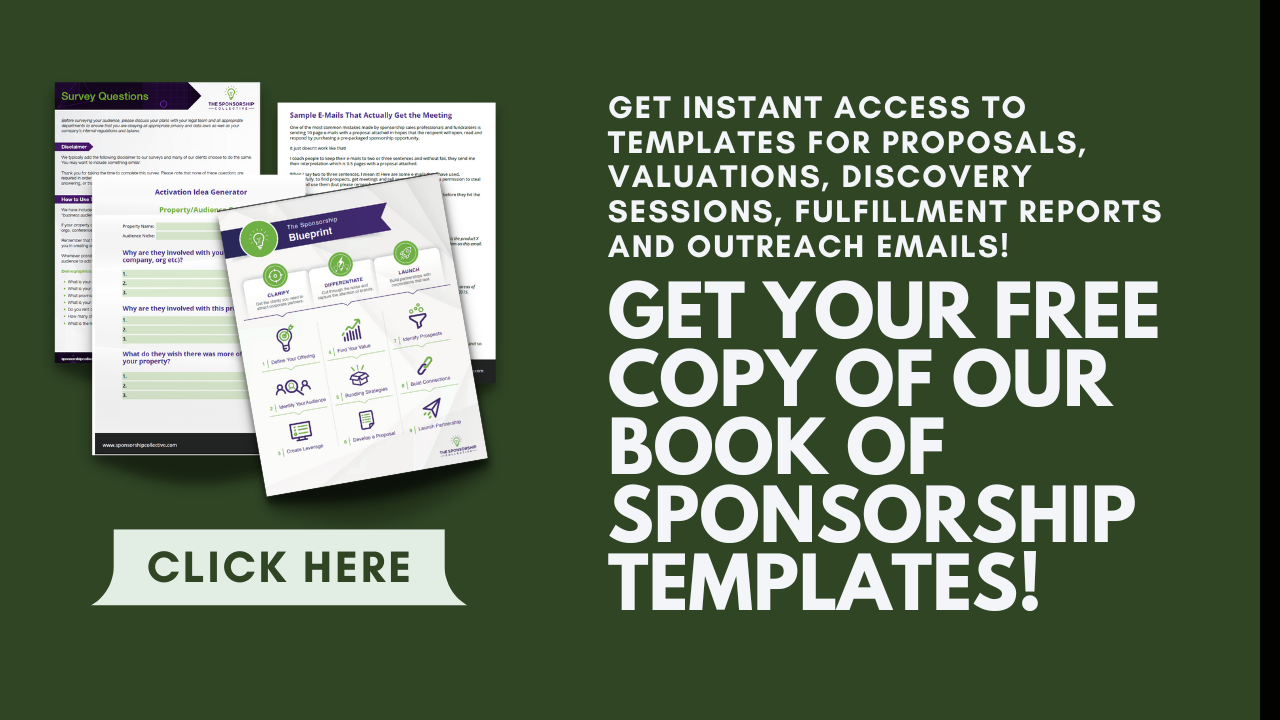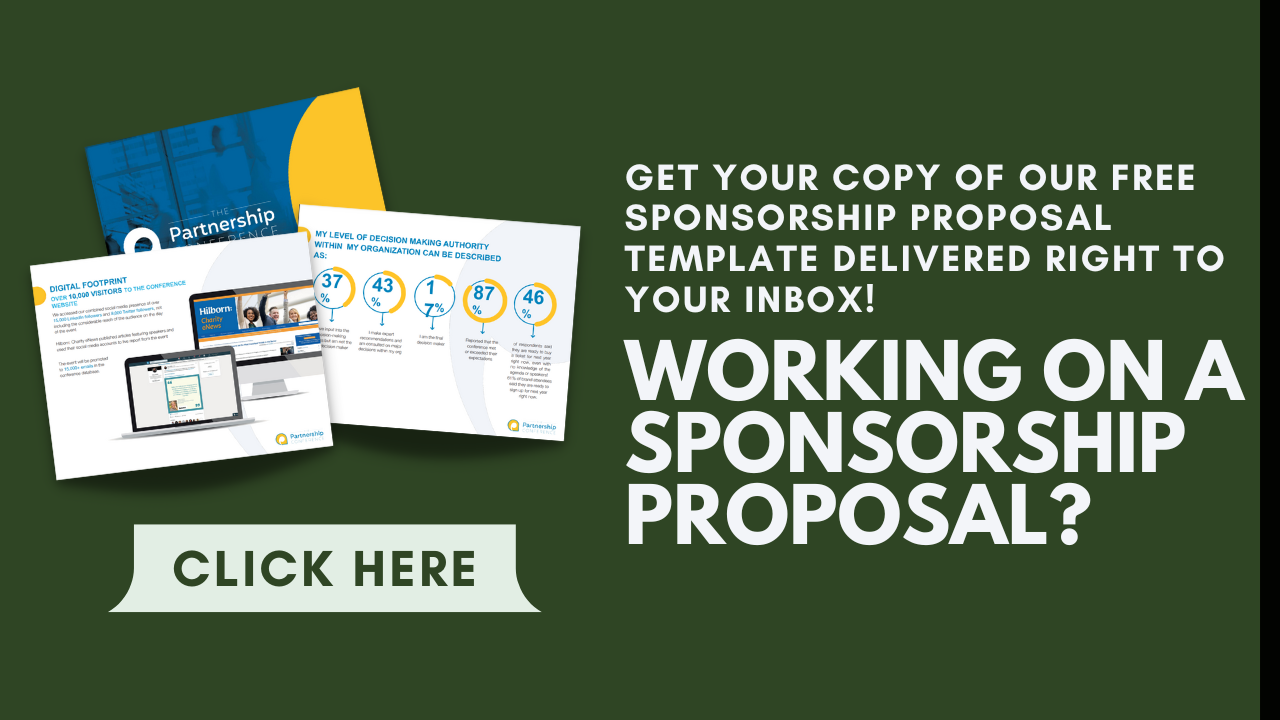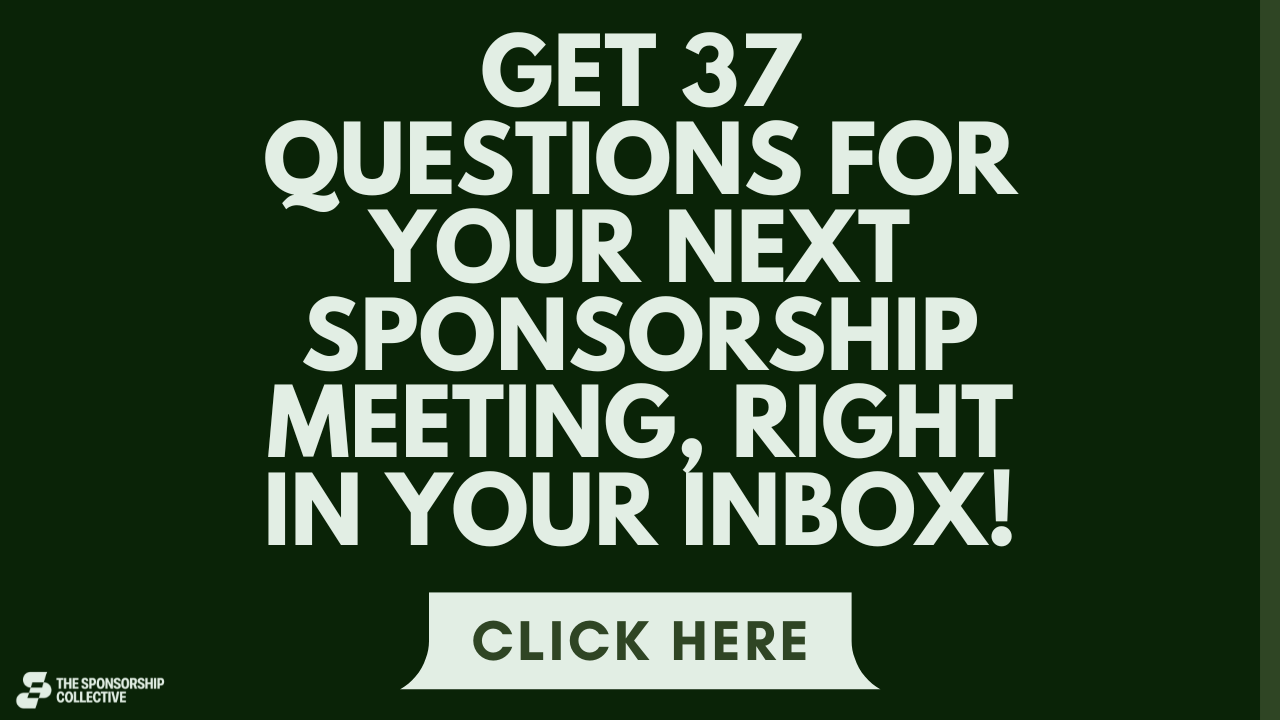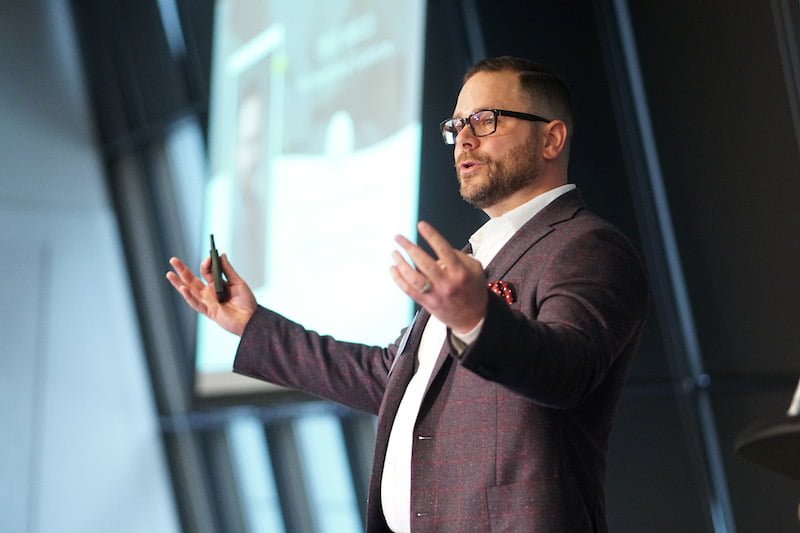I recently did a presentation for a group of fundraisers, community centre CEOs and sponsorship sales professionals in the sport and for-profit space focused on sponsorship realities that every sponsorship property needs to know.
In today’s post, I am going to share the insights from that invite-only presentation. In no particular order, here are sponsorship realities that people just aren’t talking about.
Sponsorship Truth: Sponsorship is Never a Donation
The fact is that sponsors are more interested in your audience than your cause. Your audience isn’t just those in your database but extends to those who care about what you do…and you many have never met these people!
Here’s how it works: Your cause attracts an audience and your audience attracts the sponsor. If you spend pages talking about your cause in your proposals rather than talking about your audience, you’re in trouble.
When I work with clients, we strive to develop two or three target audiences (or more) and use that to identify prospects.
Here’s an example of an audience: 40-year-old, high-net-worth moms, with 2-3 kids and a house in the suburbs. If you can’t describe your audience with this much clarity, you need to keep working!
Sponsorship Truth: Everything You Sell to Sponsors Has a Market Value
Notice, I didn’t say everything you sell has a value, I said it has a market value. That means everything you sell can be independently verified by a sponsor. If you promise them access to a particular audience, that sponsor knows (or can find out) exactly what similar opportunities cost elsewhere to get to the same audience.
Did you know that your sponsors can directly target your Twitter, LinkedIn and Facebook followers through paid ads without every giving you a penny? They can also advertise to your exact audience through alternative forms of media and never pay you to put their logo on your website.
This is why sponsorship valuations are so critical. If you are guessing at your sponsorship value, your sponsors can tell.
Sponsorship Truth: It’s NOT About Logo Placement
Logo placement is one very small aspect of sponsorship and it is the least valuable thing you can offer a sponsor. Listing your sponsors on a sign at registration with 30 other sponsors is worth a fraction of a penny per view…if you’re lucky! If you have 100,000 people passing that sign 20 times at your event then you may have some value but even then, unless the goal of your sponsor is brand awareness, logo placement is boring and of little value.
You know what’s worth a lot more? Sponsorship activation, product placement, speaking opportunities and, most important of all, the assets that your sponsors really want. Not sure what they are? Me neither! You have to ask your sponsors, and believe me, they can’t wait to tell you.
Sponsorship Truth: The Proposal Does Not Make the Sale
If you haven’t already, you have to read this sponsorship proposal case study. The fact is, your prospects receive literally thousands of unsolicited proposals every single month. What you write on page six of your sponsorship package is of no consequence. Why? Because your prospects are throwing your proposals in the garbage without reading them.
What are the chances that you will guess exactly what your prospects want and that they will have the time to read your proposal and send you cash? Well, over the course of my career and tens of millions of dollars in sponsorship sold…it’s happened a dozen times. Every other sponsorship sale happened in the same way. Research, discovery call, meeting, meeting, meeting, draft proposal, update proposal, success (or more edits).
Sponsorship is not direct mail, it is a people business.
Sponsorship Fact: Gold, Silver, Bronze Packages Don’t Work
“But Chris, I used a Gold, Silver, Bronze (GSB) package and it DID work!” My response is always the same: Maybe you sold the sponsorship despite your GSB package, not because of it. What about the 97% of your sponsors who threw your GSB package in the garbage, who you never heard from? It sure didn’t work on them!
Unless you are sporting a 30-60% close rate, increasing your sponsorship dollars every year and retaining 60% of last year’s sponsors then it isn’t working. The truth is, if you define “working” with low enough standards, anything works!
Your sponsors don’t care about the word “silver” appearing above their name or logo on a sign in a hall that nobody sees, or listed on a website or annual report that is worth a half penny per view (or less). There is nothing magical about organizing your sponsors in a tiered list if you aren’t giving them exactly what they want, charging them market rates for those assets and developing sponsorship activation opportunities that help them achieve their goals.
Sponsorship Truth: Your Audience Is Everything
You know better now than to build your sponsorship property around the creation of logos, instead focusing on assets and activations like speaking opportunities or product placement.
Yet do you know what the most valuable asset is in your entire collection? Your audience.
I know, you don’t “sell” your audience the traditional way you do an asset or activation, but I still stand by what I say.
What does your sponsor want access to most of all? That’s right, it’s your audience. They’re the ones the sponsor wants to convert.
So, what does this mean for you as you draw up activation and asset ideas for the sponsor? Keep your audience in mind. After all, the greatest activations achieve an audience need and sponsor need concurrently.
Before you can ideate activations, you have to know your audience like the back of your hand. I can’t stress this is enough. You need at least 25 unique data points for each group, which will finely segment them enough for the data you derive to be valuable to your sponsor.
Sponsorship Truth: The Discovery Session Is Not a Sales Call
Here’s a hard truth for a lot of early sponsorship seekers. The discovery session is not for sales. If it was, it would be called a sales session.
Contacting a sponsor isn’t done with the goal of selling to them right away. If you bring your sponsorship proposal and sales pitch to the meeting, you’ll walk out empty-handed without any promise of a second meeting.
Sponsors don’t want to be sold the same generic assets and activations, especially by a potential partner they’re only just getting to know. The only way to truly solve their problems is to understand what those problems are, which is what the discovery session is set up to do.
Once you treat that first opportunity solely as a chance to understand the sponsor’s goals and perspective, you will you find that your sponsorship programs progress.
Sponsorship Truth: You Can’t Be Afraid to Follow Up
Wouldn’t it be great if everyone in the business world could get back to you within 24 hours? Sure, it would be. We would all get so much done a lot faster and not have that anxious, pins-and-needles feeling while refreshing our inboxes waiting for the word.
However, I’m sure you’re well aware that that’s not how it works. People get busy, they miss emails, or messages get mis-categorized as spam. Either way, that instant reply you were hoping for maybe doesn’t come for a few days.
I’ve had sponsorship seekers not follow up because they don’t want to “bother” the prospect. But it’s not bothering them. If you call or email them 10 times in the same day, that’s bothering them.
However, if a week has passed, and you haven’t heard a thing, it’s okay to send a follow-up email or phone call, then another one if several more days pass with no word.
That said, if three or more attempts have transpired without any response, move on.
Sponsorship Truth: Most Sponsors Are Happy to Work Together Again If You Only Ask
Speaking of missed opportunities in sponsorship, I have seen so many sponsorship seekers leave tens of thousands, sometimes millions of dollars on the table because they don’t bother renegotiating with their current sponsors.
I know you’re going to be tired after your event or program concludes but save some energy for writing a post-event report detailing audience data, activations, assets, successes, and failures. Then, have a meeting with your sponsor.
Sponsorship renewal is beneficial because you have a reliable partner you already know. Most renegotiation deals are worth more money than the original. Keep in mind though that you will have to schedule a new discovery session and create fresh assets and activation suited to the sponsor’s current needs.
Sponsorship Truth: The Sponsorship Proposal Is Nowhere Near as Important as You Think It Is
If you asked any sponsorship seeker, especially those pursuing their first few deals, what the most important part of the process is, I’m sure many would tell you the proposal. Somehow, this document has been built up as the end-all, be-all of sponsorship, when it absolutely isn’t.
That’s why it always comes as a shocker to some of my clients when I tell them it’s absolutely possible to close a sponsorship deal without issuing a proposal. I should know, as I’ve done it a handful of times myself. I’ve helped clients do it.
I’m not against the sponsorship proposal in any way, shape, or form. It can be useful in some applications, but not all. At the end of the day, it’s only a document. It’s not going to convince a sponsor who’s on the fence.
If you send in a cold email with your proposal included, sponsors won’t begin responding to you left and right. They probably won’t respond to you at all.
The only time you need a proposal is when a sponsor asks for one. Until then, save the time you’d spend writing it and focus on other areas of sponsorship that will suit you better.
Sponsorship Truth: Sponsorship Ain’t Easy
Here’s my last sponsorship reality, and it’s the one that probably hits the hardest. Sponsorship isn’t easy. If it was, everyone would be doing it.
More people are breaking into sponsorship than ever, with the worldwide sports sponsorship market alone valued at $66 billion in 2022. That market will expand to $108 billion by 2030.
As market growth occurs, the competition gets steeper and the opportunities more cutthroat. It’s getting tougher out there, but it’s by no means impossible to get a sponsor. You just need to follow the sponsorship recipe, so to speak.
Begin with audience data, use your audience to create a list of prospects, set up discovery sessions, and then plan custom assets and activations. Value your sponsorship property and move your way toward signing a contract.
FAQs
What to Do If a Sponsor Pulls Out of an Event?
Unfortunately, it happens. It’s often a worst-case scenario, but here’s how to handle it. You can ask other sponsors slated for the event if they can step up and expand their offerings. Otherwise, you’ll have to downscale a bit unless you can find a replacement sponsor in time.
Are Sponsorships Legally Binding?
They are when both parties sign a contract! That’s why you should always agree to assets and activations you’re certain you can deliver. Once it’s in writing, failing to meet objectives could be perceived as a breach of contract.
Wrapping Up
I’ve personally experienced the above sponsorship blunders and seen many of my clients go through it as well. That’s why basing your sponsorship program in reality is so important. You can be prepared for challenges and have a way to navigate them!
- About the Author
- Latest Posts
Chris Baylis is the Founder and Editor-in-Chief of The Sponsorship Collective.
After spending several years in the field as a sponsorship professional and consultant, Chris now spends his time working with clients to help them understand their audiences, build activations that sponsors want, apply market values to their assets and build strategies that drive sales.
Read More about Chris Baylis




